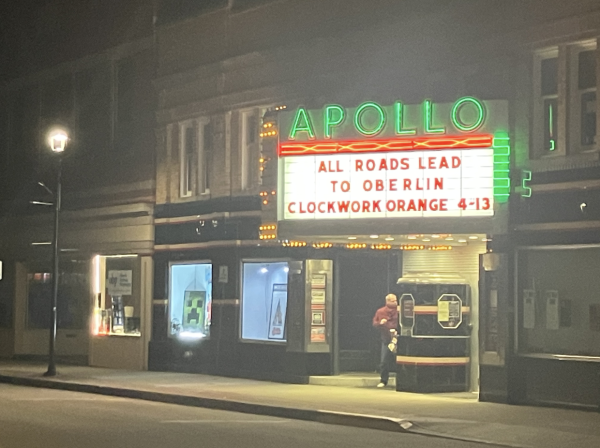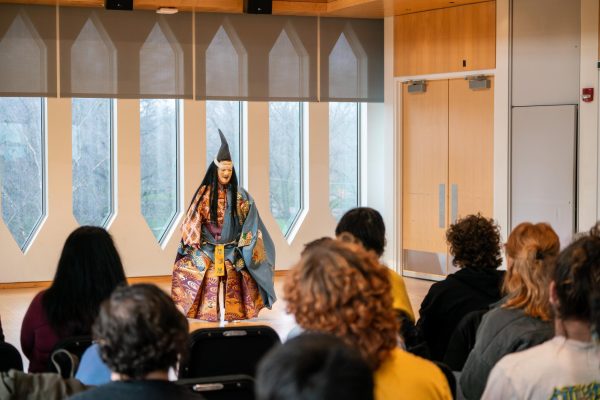Spider-Man: No Way Home, A Spectacular Conclusion To Every Spider-Man Trilogy
Editor’s Note: This review contains spoilers for Spider-Man: Far From Home.
As a fan of the Marvel Cinematic Universe, I have been excited for Spider-Man: No Way Home since the cliffhanger ending of Far From Home two and a half years ago. I was incredibly excited for No Way Home, and it did not disappoint. Not only is it the best Spider-Man film I’ve ever seen and a conclusion that sticks the landing for Tom Holland’s Spider-Man trilogy, it is also an excellent conclusion to every prior Spider-Man franchise, an afterword that retroactively improves them.
When I learned that previous Spider-Man villains would return, I decided to educate myself and watch their respective franchise appearance: the Sam Raimi-directed trilogy starring Tobey Maguire as Peter Parker, of which I watched Spider-Man (2002) and Spider-Man 2 (2004), and the so-called “amazing” duology starring Andrew Garfield as Peter, The Amazing Spider-Man (2012) and The Amazing Spider-Man 2 (2014). I found both of the Maguire movies very solidly scripted, helped by witty, iconic dialogue and charmingly-dated special effects. Above all else, they’re idiosyncratic and goofy in a way that makes them easy to love.
I’d describe the Garfield movies as more polished: the effects are of higher quality — if more dependent on computer-generated imaging — with a more sober, grittier tone. I liked the first one even more than the Raimi movies. Garfield’s Peter followed a more creative romantic subplot than Maguire’s, and Rhys Ifans’ supporting performance as villain Dr. Curtis “Curt” Connors, or The Lizard, holds up against Willem Dafoe’s Green Goblin and Alfred Molina’s Doctor Octopus, both iconic Raimi trilogy villains.
However, I found Garfield’s second movie to be the worst of all, featuring unrealistic dialogue and cliché subplots. Most disappointing was the poor portrayal of classic Spider-Man villain Electro — both visually and character-wise. Nevertheless, the varying reputations of the villains of both franchises set up high hopes for No Way Home, whether to do right by the beloved Raimi trilogy villains or to rehandle and improve a less acclaimed villain like Amazing 2’s Electro.
All five of the returning villains have a factor in common that fuels the core of No Way Home’s story: Their villainous turns were caused by accidents and failed experiments, not because they are fundamentally wicked. After Peter finds them all, he realizes they are each doomed to die fighting the Spider-Man of their universe, and he resolves to save and redeem each one by curing the effects of their accidents.
This kicks off the primary internal arc for Peter. He realizes that fully embodying Spider-Man means acting selflessly in constant pursuit of helping others, even if it means making sacrifices. He is put through strenuous trials and faces immense pressure to give up on the villains he wants to cure from both allies — Doctor Strange would rather send the villains back to their doom to save the MCU from dimensional rifting — and the villains themselves.
When Green Goblin kills Aunt May, Peter is motivated more by revenge than faith in the villains’ potential to heal and nearly kills Green Goblin in one of the film’s most brutally powerful moments. However, May and the other Spider-Men, transplanted to the MCU from their universes as well, hold him responsible throughout the film.
At first glance, the inclusion of the two prior Peters leads to dialogue and plot moments that at times feel too meta-referential to be anything but pandering towards the fanbase. While these moments can feel too saccharine to be authentic, they are still poignant and fitting for their characters, and the movie is better for their inclusion. Garfield’s Spider-Man is given depth as he expounds on how Gwen Stacy’s death in Amazing 2 affected him, and just like the villains, he is given a chance at redemption. His heart-to-heart conversation with Electro would have felt expendable purely within the context of the MCU, but within the context of Amazing 2, it’s an invaluable addition that brings healing to both of them and an effective conclusion to that film’s incomplete arc.
That’s why No Way Home is the best Spider-Man film: it holds love for the films that came before Holland’s, refusing to reduce any of their characters to cameos. It’s healing for everyone involved — satisfactorily concluding every character’s arc.
Spider-Man: No Way Home is a technically stunning, thrilling, and witty film as expected from Marvel Studios, but more importantly, it’s a therapeutic ending to not only Holland’s Spider-Man trilogy, but Maguire’s and Garfield’s as well. It’s implied this will be the last we see of Holland’s Parker for a while, but after the efforts he makes to help those in need, the sacrifice he makes to do so, and seeing where he ends up at the end of the film, it’s easy to imagine he’ll be okay. This movie is where he finishes learning how to be Spider-Man.







